| Results past Championship 28 books virtually German Americans  | Degrees of Fidelity: Harassment and Loyalty in Missouri's German-American Customs during World War I
Petra DeWitt
Ohio University Press, 2012
Library of Congress F475.G3D49 2012 | Dewey Decimal 940.403 Historians accept long argued that the Great War eradicated German civilization from American soil. Degrees of Fidelity examines the experiences of German-Americans living in Missouri during the Outset Earth War, evaluating the personal relationships at the local level that shaped their lives and the manner that they were afflicted by national war attempt guidelines. Spared from widespread hate crimes, German-Americans in Missouri did not accept the same bleak experiences equally other German-Americans in the Midwest or across America. Simply they were still discipline to regular charges of disloyalty, sometimes because of conflicts within the German-American customs itself. Degrees of Allegiance updates traditional thinking most the German-American feel during the Great War, taking into account not just the state of war years but also the history of German settlement and the war'south impact on German-American civilisation. Expand Clarification |  | From Knights to Pioneers: One German language Family in Westphalia and Missouri
Anita M. Mallinckrodt
Southern Illinois University Printing, 1994
Library of Congress F475.G3M34 1994 | Dewey Decimal 977.80043100922 Anita M. Mallinckrodt traces the 750-yr history of the Mallinckrodt family unit from its earliest documented ancestry in thirteenth-century Westphalia (in the Dortmund area) through clearing to Missouri in 1831 and beyond. In part 1, Mallinckrodt tells the story of some of her family'south leading personalities in order to explicate the history and society of medieval and early on mod Germany: the life and times of knight Ludwig (c. 1241) and crusader Gerd (c. 1450–1504); the 1451 and 1492 adventures of the mercenary knight Hermann and his son Wilhelm; the 1594 feuding of the noble brothers Dietrich and Hermann, which led to a double murder; the liberal Dortmund publisher Arnold's struggles in the early on 1800s to establish freedom of the press and to free Westphalian farmers from serfdom; and the wealthy, aloof Sis Pauline (b. 1817), founder of the Sisters of Charity and recently beatified for her efforts on behalf of the poor and bullheaded children of her solar day. In parts two and 3, Mallinckrodt focuses on the starting time of her forebears to immigrate to the New World—Julius and Emil in 1831, followed by Conrad, Hermann, August, Helene, Sophie, and Luise in 1838—and their immediate families and descendants in Missouri. These early on pioneers cleared the forests, congenital schools and churches, supported German-language periodicals, and founded social and cultural organizations that would benefit later waves of immigrants. In the 1860s, they participated in their adopted country'south Ceremonious War and held strong views toward slavery and the Marriage. Mallinckrodt ends her family'southward history with the deaths of the Dortmund pioneers in the 1890s. But From Knights to Pioneers is much more a single family's history. The experiences Mallinckrodt relates reflect those of many German families who left their mark on centuries of history and of many midwestern families transplanted from the Old World. Particularly interesting is the continuity betwixt the old and new ways of life—entries on genealogical tables need not end with the comment "immigrated to the The states," for immigrants often wrote notable capacity of family history that deserve recognition in their old homelands. Similarly, cognition of pre-immigration history is essential for those Americans whose traditions surely did not brainstorm, as oral history often suggests, with the fact that "great-granddaddy arrived in the Midwest from Deutschland in 1831." Thus the purpose of this book is to set a family's clearing chapter against its European background, without passing judgment on the cultural influence of outstanding individuals in the United States or of German immigration per se. Drawing on her extensive research in both Europe and the United States, Mallinckrodt presents an exceptionally detailed film of the social and political contexts of each of her subjects. The richness of her exposition of both the Old World background and the lives of the immigrants to the New Globe offers important insights into aspects of European and American history. Aggrandize Clarification | 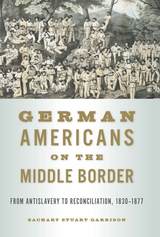 | German language Americans on the Heart Border: From Antislavery to Reconciliation, 1830–1877
Zachary Stuart Garrison
Southern Illinois Academy Press, 2019
Library of Congress E540.G3G37 2019 | Dewey Decimal 973.0431 Before the Ceremonious War, Northern, Southern, and Western political cultures crashed together on the heart border, where the Ohio, Mississippi, and Missouri Rivers meet. German Americans who settled in the region took an antislavery stance, asserting a liberal nationalist philosophy rooted in their revolutionary experience in Europe that emphasized individual rights and freedoms. Past contextualizing German Americans in their European past and exploring their ideological formation in failed nationalist revolutions, Zachary Stuart Garrison adds nuance and complexity to their story. Liberal German language immigrants, having escaped the European aristocracy who undermined their revolution and the germination of a gratis nation, viewed slaveholders as a specter of European feudalism. During the antebellum years, many liberal German Americans feared slavery would inhibit due west progress, and so they embraced the Gratuitous Soil and Free Labor movements and the new Republican Political party. Most joined the Union ranks during the Civil War.
After the war, in a region largely opposed to black citizenship and Radical Republican rule, High german Americans were seen as dangerous outsiders. Facing a bourgeois resurgence, liberal German Republicans employed the same line of reasoning they had in one case used to justify emancipation: A united nation required the cease of both federal occupation in the South and special protections for African Americans. Having played a role in securing the Marriage, Germans largely abandoned the freedmen and freedwomen. They adopted reconciliation in order to secure their place in the reunified nation. Garrison's unique transnational perspective to the sectional crunch, the Civil State of war, and the postwar era complicates our agreement of High german Americans on the eye border. Expand Clarification | 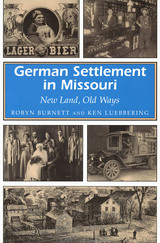 | German Settlement in Missouri: New Country, Old Ways
Robyn Burnett & Ken Luebbering
Academy of Missouri Press, 1996
Library of Congress F475.G3B87 1996 | Dewey Decimal 977.800431 German immigrants came to America for two master reasons: to seek opportunities in the New World, and to avert political and economic issues in Europe. In German language Settlement in Missouri, Robyn Burnett and Ken Luebbering demonstrate the crucial part that the German immigrants and their descendants played in the settlement and development of Missouri'southward architectural, political, religious, economic, and social landscape. Relying heavily on unpublished memoirs, letters, diaries, and official records, the authors provide important new narratives and firsthand commentary from the immigrants themselves. Between 1800 and 1919, more than 7 million people came to the Us from German-speaking lands. The High german immigrants established towns every bit they moved up the Missouri River into the frontier, resuming their traditional ways as they settled. As a result, the culture of the frontier changed dramatically. The Germans farmed differently from their American neighbors. They started vineyards and wineries, published German-language newspapers, and entered Missouri politics. The decades following the Civil War brought the gilt age of German culture in the state. The populations of many small towns were entirely German, and traditions from the homeland thrived. German language-linguistic communication schools, publications, and church services were mutual. As the German businesses in St. Louis and other towns flourished, the immigrants and their descendants prospered. The loyalty of the Missouri Germans was tested in World War I, and the anti-immigrant sentiment during the state of war and the menses of prohibition after information technology dealt serious blows to their culture. However, German traditions had already found their fashion into mainstream American life. Informative and clearly written, German Settlement in Missouri will be of interest to all readers, especially those interested in ethnic history. Expand Description | 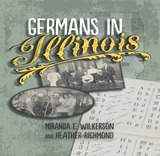 | Germans in Illinois
Miranda E. Wilkerson and Heather Richmond
Southern Illinois University Press, 2019
Library of Congress F550.G3W55 2019 | Dewey Decimal 977.300431 This engaging history of ane of the largest ethnic groups in Illinois explores the influence and experiences of High german immigrants and their descendants from their inflow in the middle of the nineteenth century to their heritage identity today. Coauthors Miranda E. Wilkerson and Heather Richmond examine the chief reasons that Germans came to Illinois and describe how they adjusted to life and distinguished themselves through a variety of occupations and community roles. The promise of cheap land and fertile soil in rural areas and emerging industries in cities attracted three major waves of German-speaking immigrants to Illinois in search of liberty and economic opportunities. Presently the land was dotted with High german churches, schools, cultural institutions, and place names. German language churches served non just as meeting places but besides as a ways of keeping language and culture alive. Names of Illinois cities and towns of German language origin include New Baden, Darmstadt, Bismarck, and Hamburg. In Chicago, many streets, parks, and buildings bear German names, including Altgeld Street, Germania Place, Humboldt Park, and Goethe Uncomplicated School. Some of the most lively and ubiquitous organizations, such as Sängerbunde, or vocalizer societies, and the Turnverein, or Turner Society, besides preserved a chip of the Fatherland. Exploring the complex and e'er-evolving German American identity in the growing diversity of Illinois's linguistic and ethnic landscape, this book contextualizes their experiences and corrects widely held assumptions about assimilation and cultural identity. Federal census data, photographs, lively biographical sketches, and newly created maps bring the complex story of German immigration to life. The generously illustrated volume also features detailed notes, suggestions for further reading, and an annotated list of books, journal articles, and other sources of information. Expand Description | 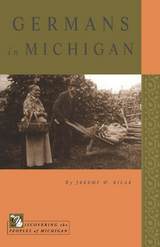 | Germans in Michigan
Jeremy Westward. Kilar
Michigan State Academy Press, 2002
Library of Congress F575.G3K45 2002 | Dewey Decimal 305.8310774 Germans are the largest ancestral group in Michigan, representing over 2.6 million descendants or 22% of the land'due south population. Still, unlike other immigrant groups, Germans have not retained their linguistic and cultural traditions as part of a distinct ethnic identity. The Bavarian villages of Frankenmuth and Gaylord stand as testaments to the one time proud and vigorous German communities that dotted both rural and urban Michigan landscapes. Jeremy W. Kilar explores the social forces that transformed Germans from inward-looking immigrants to citizens in the cultural mainstream. Germans in Michigan is a story of absorption and renewal and every bit such reveals the complexities of Americanization and immigration as social forces. Aggrandize Description | 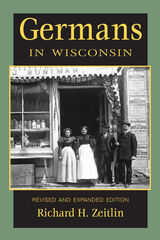 | Germans in Wisconsin
Richard H. Zeitlin
Wisconsin Historical Club Printing, 2001
Library of Congress F590.G3Z44 2000 | Dewey Decimal 977.500431 Between 1820 and 1910, nearly five and a half one thousand thousand German-speaking immigrants came to the United States in search of new homes, new opportunities, and liberty from European tyrannies. Well-nigh settled in the Midwest, and many came to Wisconsin, whose rich farmlands and ascension cities attracted three major waves of immigrants. Past 1900, German farmers, merchants, manufacturers, editors, and educators—to say null of High german churches (both Catholic and Lutheran), cultural institutions, food, and folkways—had all set their mark upon Wisconsin. In the about contempo census (1990), more than 53 percent of the country's residents considered themselves "High german"—the highest of whatsoever state in the Spousal relationship. In this acknowledged volume, now with updated text and additional historical photographs, Richard H. Zeitlin describes the values and ideas the Germans brought with them from the Onetime Land; highlights their achievements on the farm, in the workplace, and in the academy over the course of 150 years; and explains why their bear upon has been so profound and pervasive. Aggrandize Description | 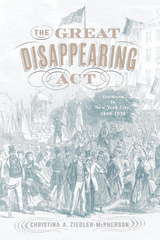 | The Great Disappearing Act: Germans in New York City, 1880-1930
Christina A. Ziegler-McPherson
Rutgers University Press, 2022
Library of Congress F128.9.G3Z54 2022 | Dewey Decimal 305.893107471 Where did all the Germans go? How does a customs of several hundred thousand people become invisible within a generation? This report examines these questions in relation to the German immigrant community in New York Metropolis between 1880-1930, and seeks to understand how German-American New Yorkers assimilated into the larger American guild in the early twentieth century.
Past the turn of the twentieth century, New York Metropolis was one of the largest German-speaking cities in the world and was dwelling to the largest German language community in the The states. This community was socio-economically diverse and increasingly geographically dispersed, as upwardly mobile second and third generation German Americans began moving out of the Lower Eastward Side, the location of America'due south first Kleindeutschland (Footling Federal republic of germany), uptown to Yorkville and other neighborhoods. New York's German language American community was already in transition, geographically, socio-economically, and culturally, when the anti-German/I Hundred Percentage Americanism of World State of war I erupted in 1917. This book examines the structure of New York Metropolis's German language community in terms of its maturity, geographic dispersal from the Lower East Side to other neighborhoods, and its ultimate absorption to the indicate of invisibility in the 1920s. It argues that when confronted with the anti-German feelings of Earth State of war I, German immigrants and High german Americans hid their culture – especially their language and their institutions – behind closed doors and sought to make themselves invisible while still existing as a German language community.
Only condign invisible did non mean being absorbed into an Anglo-American English-speaking culture and lodge. Instead, German Americans adopted visible behaviors of a new, more than pluralistic American culture that they themselves had helped to create, although past no means dominated. Just as the meaning of "German" changed in this period, so did the pregnant of "American" modify too, due to nearly 100 years of German clearing. Expand Description |  | The higher jazz
Edmund Wilson
University of Iowa Printing, 1998
Library of Congress PS3545.I6245H54 1998 | Dewey Decimal 813.52 | 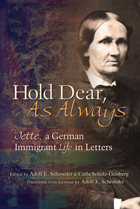 | Hold Dear, As E'er: Jette, a German language Immigrant Life in Letters
Adolf Eastward. Schroeder and Carla Schulz-Geisberg
Academy of Missouri Press, 1988
Library of Congress F475.G3B787 1988 | Dewey Decimal 977.800431 Henriette Geisberg Bruns was twenty-3 when she arrived in 1836 at the isolated Westphalia Settlement in central Missouri with her husband, baby son, 2 brothers, and a maid. Jette, as she was known to her family and friends, had not come to America past inclination, but from duty. Her married man Bernhard, a physician, had fallen victim to the emigration fever sweeping Frg in the 1830s and was convinced that he could provide a meliorate life for his family in the American Free States where land was plentiful, the soil was fertile, and taxes were low. Born into a large, prosperous, closely knit family, Jette had set out for the New World reluctantly; but once in Missouri, she was determined not to give upwards and go back home, as a neighboring family did. Although she maintained her resolve, this collection of messages written to her family unit in Germany shows that her life in America was often beset by impecuniousness, affliction, and loneliness. Jette had been persuaded to immigrate for the sake of her children's time to come; nevertheless, of the ten born in central Missouri, five died in childhood, three within iii weeks in September and October 1841.Despite the family responsibilities and the hardships she faced in Missouri, Jette maintained a lively involvement in American political and social life. For fifteen years in Westphalia and almost fifty in Jefferson City and St. Louis, she observed and offered acute—if sometimes acerbic—commentary on the historic as well as the daily events of nineteenth-century life. Left destitute past the death of her husband, who had served as mayor of Jefferson City during the Civil State of war, she opened a boarding-business firm in her domicile across from the country capitol to support her own children and those of her brother. There the High german radicals in state authorities gathered to argue and debate. This rare collection of personal family unit letters, combined with an autobiographical sketch Jette wrote subsequently the Civil War, illuminates the feel of one immigrant woman in a land that was e'er foreign to her. Expand Description | 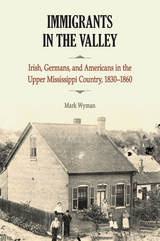 | Immigrants in the Valley: Irish, Germans, and Americans in the Upper Mississippi Country, 1830-1860
Mark Wyman
Southern Illinois University Press, 2016
Library of Congress F353.W97 2016 | Dewey Decimal 305.906912077 Thousands of newcomers flocked into the Upper Mississippi country in the decades leading upward to the Ceremonious War. Illinois, Wisconsin, Iowa, Missouri, and Minnesota received immigrants from most areas of Europe, as well as Americans from the Upper South, New England, and the Center Atlantic states. They all carried with them religious behavior, experiences, and expectations that differed widely, attitudes and opinions which often threw them into conflict with each other. Drawing extensively on family messages sent abode to Europe, missionary reports, employment records, and other diverse materials from 1830 to 1860, Wyman shows the interplay between the major groups traveling the roads and waterways of the Upper Mississippi Valley during those crucial decades. The effect is a lively, richly illustrated account that will assist Americans everywhere meliorate understand their diverse heritage and the surround in which their family copse took root. A new preface to this paperback edition helps to bring the scholarship up to date. Expand Description |  | Contained Immigrants: A Settlement of Hanoverian Germans in Western Missouri
Robert W. Frizzell
University of Missouri Press, 2007
Library of Congress F472.L2F75 2007 | Dewey Decimal 977.84530431 Between 1838 and the early 1890s, High german peasant farmers from the Kingdom of Hanover made their way to Lafayette County, Missouri, to grade a new community centered on the town of Concordia. Their story has much to tell the states nearly the American immigrant feel—and about how newcomers were defenseless up in the violence that swept through their adoptive abode. Robert Frizzell grew upwards almost Concordia, and in this kickoff book-length history of the German settlement, he chronicles its life and times during those formative years. Founded by Hanoverian Friedrich Dierking—known as "Dierking the Comforter" for the assistance he gave his countrymen—the Concordia settlement blossomed from 72 households in 1850 to 375 over the course of twenty years. Frizzell traces that growth equally he examines the success of early agronomical efforts, but he as well tells how the community strayed from the cultural path set by its freethinker founder to become a heart of religious conservatism. Drawing on archival material from both sides of the Atlantic, Frizzell offers a compelling account for scholars and general readers alike, showing how Concordia differed from other High german immigrant communities in America. He also explores the weather condition in Hanover—particularly the village of Esperke, from which many of the settlers hailed—that caused people to go out, shedding new light on theological, political, and economic circumstances in both the Old World and the New. When the Civil War came, the antislavery Hanoverians found themselves in the Missouri county with the greatest number of slaves, and the Germans supported the Spousal relationship while about of their neighbors sympathized with Confederate guerrillas. Frizzell tells how the notorious "Bloody Pecker" Anderson attacked the community three times, committing atrocities every bit gruesome as any recorded in the state—and so how the community flourished after the state of war and fifty-fifty bought out the farmsteads of onetime slaveholders. Frizzell'south business relationship challenges many historians' assumptions almost German motives for immigration and includes portraits of families and individuals that show the high price in toil and claret required to encounter the challenges of making a home in a new country. Independent Immigrants reveals the untold story of these newcomers as it reveals a little-known aspect of the Civil State of war in Missouri. Expand Description | 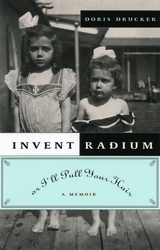 | Invent Radium or I'll Pull Your Hair: A Memoir
Doris Drucker
University of Chicago Press, 2004
Library of Congress CT275.D8754A3 2004 | Dewey Decimal 300.92 "And don't forget, once you are married to a Rothschild you can become a famous woman," Doris Schmitz'due south mother told her. "Be another Madame Curie and invent radium! You'll exist famous!" Doris reminded her that radium had already been discovered. "Don't debate," her mother said. "You're going to invent radium or I'll pull your hair. Y'all're just being negative, like your father." Rothschilds and radium were the horizons of Doris'southward childhood. Built-in in Germany in the early twentieth century, she came of age in an upper-middle-class family that struggled to maintain its conservative respectability between the two World Wars. Doris Drucker (she met her married man Peter—of management fame—in the 1930s) has penned a lively and charming memoir that brings to life the Deutschland of her babyhood. Rather than focusing on the rise of Hitler, Drucker weaves history into her story of the mean solar day-to-twenty-four hours life of a relatively apolitical family. She chronicles here the crowds that gathered to come across the Zeppelin, her attempts to negotiate her Prussian mother's plans for her (like marrying well and becoming a famous scientist), ski trips and hikes, the schools she attended, her begetter'southward struggles to support the family, and all the stuff and drama that make up a childhood. Drucker's energetic storytelling, center for the telling detail, and sly humor draw the reader into her portrait of a way of life made forever poignant past its identify in history then close to the brutalities of Globe War II. From the boarding school that forbade girls to look at their own legs while they bathed to the unfortunate confusion that resulted from Doris'southward misinterpretation of "Warsaw has fallen" every bit "The Waschfrau [washerwoman] has fallen," the tales recounted in Invent Radium or I'll Pull Your Pilus give dimension and depth to a milieu that has been flattened by the historical events effectually it. Expand Description | 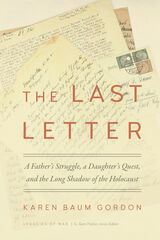 | The Concluding Letter: A Father'due south Struggle, a Girl'south Quest, and the Long Shadow of the Holocaust
Karen Baum Gordon
University of Tennessee Press, 2021
Library of Congress F394.D219J54 2021 | Dewey Decimal 940.5318092 Born a German language Jew in 1915, Rudy Baum was eighty-six years old when he sealed the garage door of his Dallas dwelling house, turned on the car ignition, and tried to end his life. Afterwards confronting her begetter's attempted suicide, Karen Baum Gordon, Rudy's girl, began a sincere effort to understand the sequence of events that led her begetter to that dreadful day in 2002. What she establish were hidden scars of generational struggles reaching dorsum to the camps and ghettos of the Third Reich. In The Last Letter: A Father'due south Struggle, a Daughter's Quest, and the Long Shadow of the Holocaust, Gordon explores non just her father's life story, but also the stories and events that shaped the lives of her grandparents—two Holocaust victims that Rudy tried in vain to salvage in the belatedly 1930s and early on years of World War II. This investigation of her family unit's history is grounded in fourscore-8 letters written mostly by Julie Baum, Rudy'south female parent and Karen'southward grandmother, to Rudy between November 1936 and Oct 1941. In five parts, Gordon examines pieces of these well-worn, handwritten messages and other archival documents in club to notice what her family unit experienced during the Nazi menstruum and the psychological touch that reverberated from it in the generations that followed. Part of the Legacies of State of war series, The Final Letter is a captivating family memoir that spans events from the 1930s and Hitler's rise to power, through World War Two and the Holocaust, to the present-twenty-four hour period Usa. In recreating the fatal journeys of her grandparents and tracing her begetter's efforts to save them an body of water away in America, Gordon discovers the forgotten fragments of her family unit's history and a bright sense of her own Jewish identity. Past inviting readers forth on this journey, Gordon manages to laurels victim and survivor alike and shows subsequent generations—now many years afterwards the tragic events of World War II—what information technology means to recollect. Expand Description | 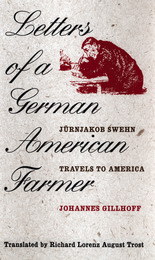 | Letters of a German American Farmer: Juernjakob Swehn Travels to America
Johannes Gillhoff
University of Iowa Press, 2001
Library of Congress PT2613.I63J8613 2000 | Dewey Decimal 833.912 Early on in the twentieth century, drawing upon the hundreds of letters written to his begetter by students who had emigrated to northeastern Iowa from Mecklenburg, in northeastern Germany, Johannes Gillhoff created the blended character of Juernjakob Swehn: the archetype of the upright, honest mensch who personified the German immigrant, on his style to a meliorate life through ambition and hard work. Gillhoff'due south farmer-hero, planting and harvesting his Iowa acres, joking with his neighbors during the snowy winters, building a church with his own hands, proved and so pop with the German public that a million copies of Jürnjakob Swehn der Amerikafahrer are in print. Now for the first time this wise and endearing book is available in English. "First, let's talk almost pigs,"Juernjakob Swehn writes from his subcontract in Iowa. "In America, pigs have a curly tail and talk in Low German then I can understand them." Swehn builds a log firm and makes a success of farming, marries a adult female who's "a whole different nation that has its confidence from the inside," raises a family, and becomes an elder in the Lutheran church. He recognizes his good fortune but acknowledges that memories of his hamlet grow stronger every year, that "being homesick is the best affair that home tin do for you lot …no power on earth holds on to yous like your homeland." It is this sense of home, both in Iowa and in Mecklenburg, that makes Juernjakob Swehn entreatment to today's readers equally much as he appealed to readers in 1916. Aggrandize Description | 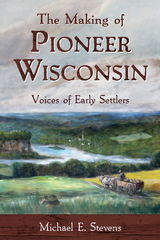 | The Making of Pioneer Wisconsin: Voices of Early on Settlers
Michael E. Stevens
Wisconsin Historical Gild Printing, 2018
Library of Congress F584 | Dewey Decimal 977.503 From the mid-1830s through the 1850s, more than than a half 1000000 people settled in Wisconsin. While traveling in ships and wagons, establishing homes, and forming new communities, these men, women, and children recorded their experiences in letters, diaries, and newspaper manufactures. In their own words, they revealed their fears, joys, frustrations, and hopes for life in this new place. The Making of Pioneer Wisconsin provides a unique and intimate glimpse into the lives of these early settlers, as they describe what it felt like to be a teenager in a wagon heading west or an isolated young wife living far from her friends and family. Woven together with context provided by historian Michael Due east. Stevens, these commencement-person accounts form a fascinating narrative that deepens our ability to sympathise and empathize with Wisconsin's early pioneers. Expand Clarification | 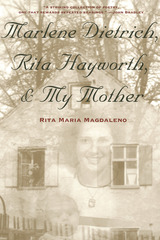 | Marlene Dietrich, Rita Hayworth, & My Female parent
Rita Maria Magdaleno
University of Arizona Press, 2003
Library of Congress PS3613.A34M37 2003 | Dewey Decimal 811.6 Her claret is both Aryan and Aztec and runs equally deep as the waters between two worlds. Rita Magdaleno was born near Dachau before long later World War II to a High german mother and a Mexican American GI. Her family moved to Arizona in 1947, and Rita was raised with her male parent's traditions—merely she remains at center a child of ii cultures. This poetic memoir, recalling Magdaleno'southward return to the land of her birth, is an intertwining of personal and public history, bridging continents and cultures in search of family secrets. Her poems recall a female parent "Marlene Dietrich pretty, / her smoky vocalization / & those wide Aryan / eyes that promised / never to lie," a war bride who named her child afterward a Hollywood movie star fifty-fifty earlier casting eyes on America. They as well offer a new, intimate view of the state of war—and of today'south reunified Germany—and prove that the consequences of events played out half a century agone keep to resonate with the children of that era. Magdaleno navigates currents of emotion that would drown less capable poets. With patience, backbone, and abiding love, she draws on memories of mother and motherland to show us that healing tin come in many forms. Expand Description | 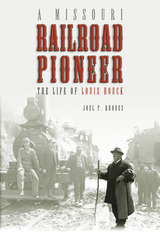 | A Missouri Railroad Pioneer: The Life of Louis Houck
Joel P. Rhodes
University of Missouri Printing, 2013
Library of Congress F466.H86R48 2008 | Dewey Decimal 977.803092 Lawyer and journalist, entrepreneur and philanthropist, Louis Houck is oftentimes called the "Begetter of Southeast Missouri" because he brought the railroad to the region and opened this backwater expanse to industrialization and modernization. Although Houck's name is piddling known today outside Missouri, Joel Rhodes shows how his story has relevance for both the state and the nation. Rhodes presents a more complete picture of Houck than has always been available: reviewing his life from his High german immigrant roots, considering his career from both social and political perspectives, and grounding the story in both country and national history. He especially tells how, from 1880 to the 1920s, this self-taught railroader synthetic a network of 5 hundred miles of track through the wilderness of wetlands known as "Swampeast Missouri"—and how these "Houck Roads" provided a heave for population, agriculture, lumbering, and commerce that transformed Cape Girardeau and the surrounding expanse. Rhodes discusses how Houck fits into the era of economic individualism—a time when men with lilliputian formal training shaped mod industry—and also gives voice to Houck's critics and shows that he was non always an like shooting fish in a barrel man to work with. In telling the story of his railroading enterprise, Rhodes chronicles Houck'due south battle with the Jay Gould railroad empire and offers key insight into the development of America's railway system, from the cutthroat practices of ruthless entrepreneurs to the often-comic ineptness of first-up track lines. More than than only a biography of a business entrepreneur, the book tells how Houck not merely adult the region economically just also followed the pb of Andrew Carnegie past making art, culture, and formal didactics bachelor to all social classes. Houck besides served for thirty-6 years as president of the Board of Regents of Southeast Missouri State Instructor's Higher, and equally a self-taught historian he wrote the offset comprehensive accounts of Missouri's territorial period. A Missouri Railroad Pioneer chronicles a multifaceted career that transformed a region. Solidly researched, this lively narrative also offers an entertaining read for anyone interested in Missouri history. Expand Clarification |  | Nassau Plantation: The Evolution of a Texas-German Slave Plantation
James C. Kearney
University of North Texas Printing, 2010
Library of Congress F395.G3K436 2010 | Dewey Decimal 976.4251 |  | The Nature of Truth
Sergio Troncoso
Northwestern University Press, 2003
Library of Congress PS3570.R5876N38 2003 | Dewey Decimal 813.54 This convention-challenging suspense novel represents the next wave of Latino literature, eschewing the stereotypical story of poverty in the barrios or discrimination to explore the differences--and links--between righteousness and evil in the search for moral truth. Helmut Sanchez is a young researcher in the employ of the renowned scholar Werner Hopfgartner. By chance Sanchez discovers a letter of the alphabet written in the 1950s by Hopfgartner mocking feelings of guilt over the Holocaust. Appalled, he digs into the scholar's life, determined to find the truth and finally uncovering the show of Hopfgartner'southward sordid past. Sure of his conclusions, Helmut decides that just one shocking human action is morally correct. When he does, the consequences are immense, and the price taken on his listen and conscience is amplified when one of his friends is wrongly accused of the criminal offense-and is wrongly left to pay for information technology. Intelligent and literate, The Nature of Truth breaks new basis in Latino literature, focusing on how a contemporary man of unique heritage--a Mexican-High german who has come to America by manner of Germany--navigates a complex moral universe and how his journey reflects the tension between justice and righteousness in American life. Further information about the writer tin can be found at his web site: <A HREF="http://sergiotroncoso.com">http://sergiotroncoso.com.</A> Aggrandize Description | 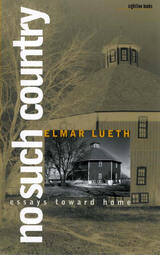 | No Such Country: Essays toward Dwelling house
Elmar Lueth
University of Iowa Printing, 2002
Library of Congress E184.G3L93 2002 | Dewey Decimal 973.04310092 Matthew Mark Trumbull was a Londoner who immigrated at the historic period of 20. Within 10 years of his inflow in America, he had become a lawyer in Butler County, Iowa; ii years later a member of the state legislature; and two years subsequently that a captain in the Wedlock Army. By the terminate of the Civil War, he was a brevet brigadier general, and in his after years he was an author and lecturer. Kenneth Lyftogt's biography details the astonishing life of this remarkable man, also shedding lite on the histories of the Third Iowa Volunteer Infantry and the Ninth Iowa Volunteer Cavalry. Expand Description |  | Off Paradise: Stories
Hart Wegner
Academy of Nevada Press, 2001
Library of Congress PS3573.E367O38 2001 | Dewey Decimal 813.54 Martin, the central character of Hart Wegner'south powerful short-story bike, is a centre-aged German emigre who has found a home, of sorts, in the isolated and oftentimes surreal setting of contemporary Las Vegas. Exiled at the finish of World State of war Ii with his parents from their beloved Silesia, the family struggles to come to terms with the turmoil of history and memory while they cope with the challenges of absorption in an alien setting. In stories that range from the Nevada desert to the lost world of prewar Silesia, Wegner explores, through the perspectives of Martin, his aging parents, and their small circle of beau emigres, the intricate tapestry of the exile experience--childhood recollections of the vast and fertile plains of Due east Germany and the shelter of comfortable and loving homes, memories of the horrors of war, the guilt and terror and despair of displacement, the frustrations of finding one's way in a new and alien civilization, the precious ties of family unit and longtime friendship. And nearly of all, loss--the loss of home; of an identity formed past an ancient language, the details of a shared culture, and a mutual sense of past and of future; of loved ones; and finally, and nigh tragically, of memory itself. Wegner'due south characters are vividly and bravely human being, bitter, tender, despairing, and full of hope. And e'er-seeking a new home, a new place in which to belong after their long sojourn in the wilderness. The inner earth of the exile has never been examined with such sympathy, such clarity, or such eloquence. Expand Description |  | The One-time German language Baptist Brethren: Organized religion, Farming, and Change in the Virginia Bluish Ridge
Charles D. Thompson Jr.
Academy of Illinois Press, 2006
Library of Congress F232.F7T49 2006 | Dewey Decimal 975.56800431 Since arriving nearly 250 years ago in Franklin County, Virginia, High german Baptists accept maintained their faith and farms past relying on their tightly knit customs for spiritual and economic support. Today, with their land and livelihoods threatened by the encroachment of neighboring communities, the structure of a new highway, and competition from corporate megafarms, the High german Baptists observe themselves forced to adjust. Charles D. Thompson Jr.'s The One-time German language Baptist Brethren combines oral history with ethnography and archival inquiry--as well every bit his own family unit ties to the Franklin County community--to tell the story of the Brethren's faith on the cusp of impending change. The book traces the transformation of their operations from frontier subsistence farms to greenbacks-based enterprises, connecting this with the wider confluence of agronomics and faith in colonial America. Using all-encompassing interviews, Thompson looks behind the scenes at how individuals interpret their own futures in farming, their hope for their faith, and how the failure of religiously motivated agronomics figures in the larger story of the American farmer. Expand Clarification | 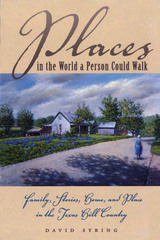 | Places in the World a Person Could Walk: Family, Stories, Home, and Place in the Texas Loma State
By David Syring
University of Texas Press, 2000
Library of Congress F392.T47S9 2000 | Dewey Decimal 976.4 Bound-fed creeks. Old stone houses. Cedar brakes and bleached limestone. The Hill Country holds powerful sway over the imagination of Texans. So many of u.s.a. dream of having our ain little place in the limestone hills. The Hill Country feels just similar home, even if you've never lived in that location.This beautifully written book explores what the Hill Country has meant equally a homeplace to the author, his family, and longtime residents of the surface area, too as to newcomers. David Syring listens to the stories that his aunts, uncles, and cousins tell virtually life in the Colina Land and grapples with their meaning for his ain search for a place to belong. He besides collects short stories focused around Honey Creek Church building to consider how places become containers for memory. And he draws upon several years of living in Fredericksburg to talk well-nigh the issues and opportunities created by heritage tourism and the development of the town every bit a "dwelling" for German Americans. These interconnected stories illuminate what it means to belong to a identify and why the Texas Loma Country has become the spiritual, if non actual, habitation of many people. Aggrandize Clarification | 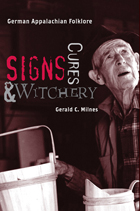 | Signs, Cures, and Witchery: German Appalachian Folklore
Gerald C. Milnes
University of Tennessee Press, 2007
Library of Congress GR111.G47M55 2007 | Dewey Decimal 398.208931074 Signs, Cures, & Witchery provides a fascinating glimpse of some piddling-known Appalachian behavior and practices amongst descendants of early German pioneers. Signs, Cures and Witchery opens a window into our ancient past, revealing the courage and resourcefulness of people whose survival depended on their ability to "read signs," cure their own ills, and find explanations for life's mysteries. Local community practices in West Virginia such as witch doctoring, "belsnickling," "shanghai," and folk healing are continued to their medieval counterparts in woodcuts and other works of art. In tracing clearing to remote mountain communities, we learn how expressions of folk art and folk belief survive. This work specifically examines aspects of Appalachian oral tradition and folklore that describe from German culture. Informative and entertaining, Signs, Cures, and Witchery is an invaluable aid to all who have an involvement in religion, psychology, folklore, metaphysical, regional, gender, and ethnic studies. Gerald C. Milnes is the folk arts coordinator of the Augusta Heritage Middle at Davis and Elkins College. He is the editor of Granny Will Your Domestic dog Bite and Other Mountain Rhymes and author of Play a Dabble: Traditional Music, Dance, and Folklore in West Virginia. Expand Description | 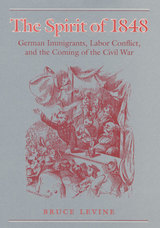 | The Spirit of 1848: German language Immigrants, Labor Conflict, and the Coming of the Civil War
Bruce Levine
University of Illinois Printing, 1992
Library of Congress E184.G3L5 1992 | Dewey Decimal 973.0431 Immigrants and their children became the primary component of the U.S. working class during the nineteenth century. Bruce Levine examines the early years of this social transformation, focusing on High german-born craft workers and the primal roles they played in the economical and political life of the wage-earning population of antebellum America. Interweaving themes oft treated separately---immigration, industrialization, class germination, and the political polarization over slavery---Levine sheds new light on the development of the working class, the nature and appeals of partisan politics, and the conflicts that led to exclusive war.
The Spirit of 1848 offers much new data and insight concerning craftwork, the nature of the antebellum labor move (including the great New York Metropolis tailors' strike of 1850), the pregnant of nativism, the significance of the push for land reform, the diverse character of the free-soil movement, and the pop appeals of both the Democratic and Republican parties.
Expand Description | 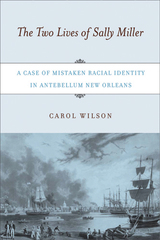 | The Ii Lives of Emerge Miller: A Case of Mistaken Racial Identity in Antebellum New Orleans
Wilson, Carol
Rutgers Academy Press, 2007
Library of Congress F379.N553M559 2007 | Dewey Decimal 305.800976335 In 1843, the Louisiana Supreme Court heard the case of a slave named Emerge Miller, who claimed to have been built-in a costless white person in Germany. Emerge, a very light-skinned slave daughter working in a New Orleans caf, might non take known she had a case were it not for a woman who recognized her as Salom Muller, with whom she had emigrated from Federal republic of germany over xx years before. Sally decided to sue for her liberty, and was ultimately freed, despite stiff testify contrary to her claim. InThe Two Lives of Emerge Miller,Carol Wilson explores this fascinating legal instance and its reflection on broader questions about race, society, and law in the antebellum Due south. Why did a court system known for its farthermost bias confronting African Americans aid to gratuitous a woman who was believed by many to be a black slave? Wilson explains that while the notion of white enslavement was shocking, it was easier for society to acknowledge that possibility than the alternative-an African slave who deceived whites and triumphed over the system. Expand Clarification | 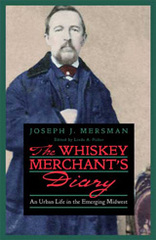 | The Whiskey Merchant'southward Diary: An Urban Life in the Emerging Midwest
Joseph J. Mersman
Ohio Academy Printing, 2007
Library of Congress F499.C553M47 2007 | Dewey Decimal 305.893107786609 Joseph J. Mersman was a liquor merchant, a German American immigrant who aspired—successfully—to go a cocky-made man. Hundreds of the residents of Mersman's hometown in Germany immigrated to Cincinnati in the 1830s, joining many thousands of other High german immigrants. In 1847, at the age of twenty-three, Mersman began recording his activities in a bound book, pocket-sized enough to fit into his coat pocket. His diary, filled with work and play, eating and drinking, flirting and dancing, provides a unique picture of everyday life, showtime in Cincinnati and so in St. Louis, the new urban centers of the emerging Midwest. Outside of Gold Rush diaries and emigration journals, few narrative records of the antebellum menstruation have been published. Illustrated with photographs, maps, and period advertisements, the diary reveals how a immature man worked to plant himself during an era that was rich in opportunity. Equally a whiskey rectifier, Mersman bought distilled spirits, redistilled or reprocessed them to remove contaminants or increase the alcohol content, and added various flavorings before selling his product to liquor retailers. In his diary, he describes scrambling for capital, marketing his wares, and arranging transportation by steamboat, motorbus, and railroad train. Although the concern that he sought to chief was eliminated by the passage of the Pure Food Police force of 1906, Mersman, like almost rectifiers, was a reputable wholesaler. Merchants like him played an important role in distributing liquor in nineteenth-century America. Mersman confronted serious disease, both as a sufferer from syphilis and equally a witness to two devastating cholera epidemics. Unlike other residents of St. Louis, who fled the relative safety of the countryside, he remained in the city and saw the impact of the epidemics on the community. Linda A. Fisher's extensive, insightful, and highly readable annotations add a wealth of groundwork information to Mersman's story. Her professional person training and career as a physician give her a particularly valuable perspective on the public wellness aspects of Mersman'south life and times. Expand Description | | |





























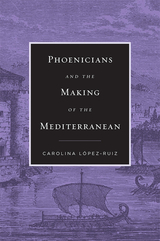
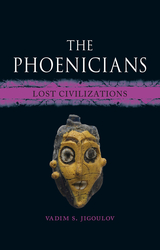
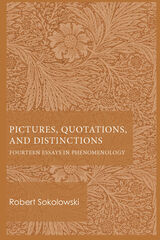
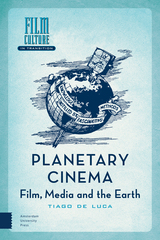
0 Response to "Books on Muller/miller Families in Germany in United States"
Post a Comment